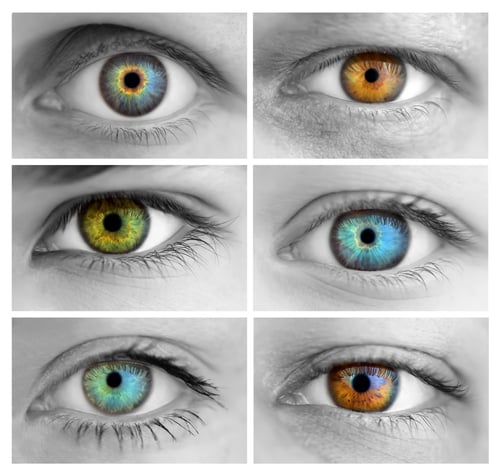 Submitted by Edgar on
Submitted by Edgar on

Our eyes are one of the most beautiful features of our bodies. Not only do we use them for communication and to make a connection with those we are speaking with, but the different colors, shapes and sizes that eyes come in is what often sets us apart from those around us. For instance, a persons bright blue eyes or vivid green eye color can be very memorable, even if you have just met them for the first time.
However, one unique type of eye coloring that can be truly eye-catching to nearly everyone who takes notice is heterochromia. This rare vision term is used to describe individuals who have two different colored eyes. For instance, someone who has one solid green eye and one solid brown eye, or someone who even has flecks of a unique color in just one of their eyes.
While heterochromia is pretty uncommon in humans (it typically only affects around 11 in every 1,000 people in America), many famous people such as David Bowie, Kate Bosworth and Mila Kunis all have two different colored eyes. This vision condition is even more common in dogs, especially Dalmatians, Huskies and Australian Sheep Dogs, who are often found with two different colored eyes.
Many cases of heterochromia are hereditary or are caused by a particular disease or medical syndrome. In some rare cases, heterochromia can even be caused by an eye injury. Some specific causes of eye color changes include hemorrhaging, familial heterochromia, a foreign object in the eye, glaucoma, or neurofibromatosis. However, despite all of this, having two different colored coeyes does not always necessarily mean that there are underlying health issues at bay.
What Are The Different Types Of Heterochromia?
There are three different types of heterochromia of the eye:
- Complete Heterochromia – When both of the eyes are completely different colors (such as one eye brown and one eye blue). This is the most widely-known version of this vision condition.
- Sectoral heterochromia – When there are two different colors in the same iris. For instance, a splash of brown or green when the dominant hue is blue.
- Central heterochromia – When the iris itself has two or more complete sets of color. For instance, blue with a green ring close to the pupil or a purplish ring around the outer edge.
Does Heterochromia Cause A Problem With Vision?
If you notice that there are new changes in the color of your eye, or if your child begins developing two different colored eyes, it doesn’t hurt to undergo a thorough eye examination. This exam can rule out most causes of heterochromia to ensure that there is no underlying disorder that may be causes the difference. However, if this test comes back clear, no further testing may be necessary!
https://www.ocli.net/blog/why-do-some-people-have-different-colored-eyes/